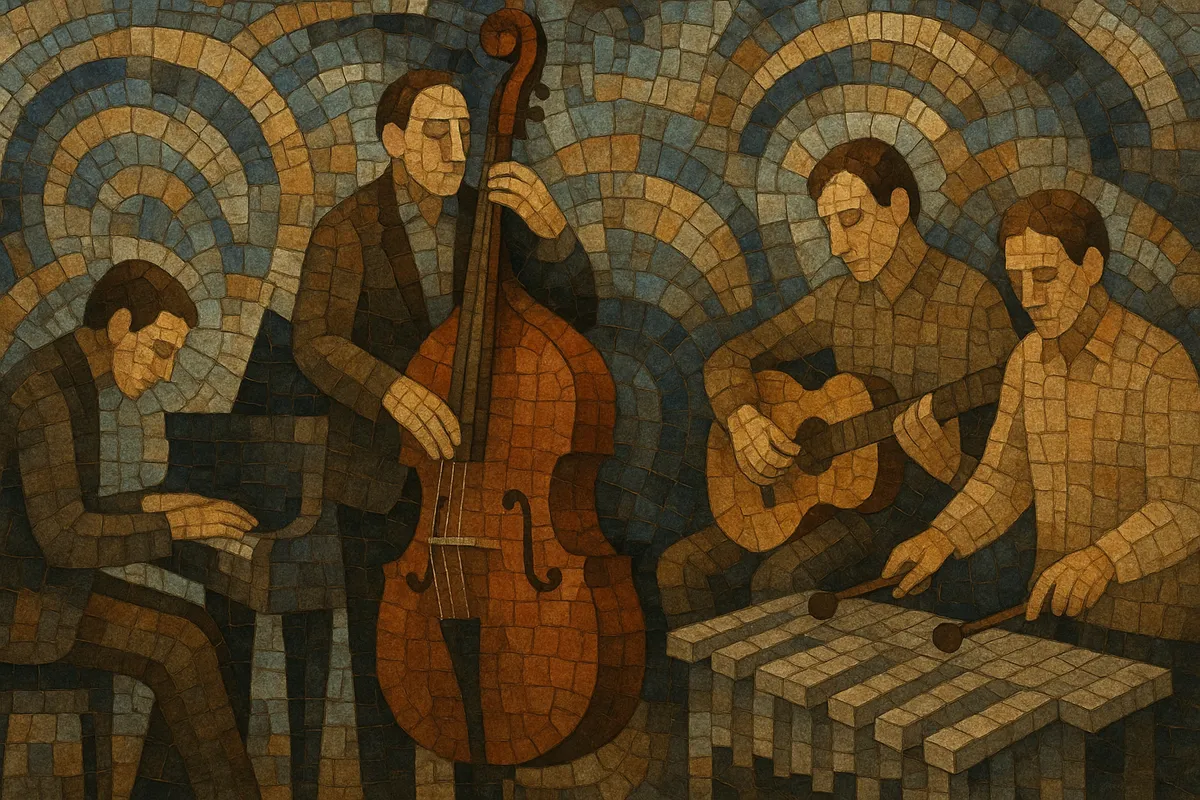
Chamber jazz is a refined, small-ensemble approach to jazz that borrows the intimacy, timbral palette, and structural thinking of classical chamber music. Instead of big-band power or hard-swinging virtuosic displays, it prioritizes subtle dynamics, contrapuntal lines, and carefully shaped arrangements.
Typical instrumentation includes piano, vibraphone, guitar, double bass, light percussion, and at times strings or woodwinds. Improvisation remains central, but solos are restrained, conversational, and integrated into composed frameworks. The overall sound is spacious, lyrical, and acoustically focused—frequently closer to the volume and precision of a chamber group than to a club combo.
Historically adjacent to cool jazz and Third Stream, the style was later deepened by the ECM label’s spacious production aesthetic, which emphasized silence, resonance, and a modern classical sensibility. The result is music that can feel calm and contemplative without losing jazz’s harmonic depth and rhythmic subtlety.
Chamber jazz coalesced in the United States during the 1950s, when groups such as the Modern Jazz Quartet brought an intimate, acoustically sensitive aesthetic to jazz performance. Drawing on classical chamber music’s clarity, counterpoint, and balance, these ensembles shifted focus from sheer swing intensity toward dynamics, form, and timbre. This development intersected with the emergent Third Stream movement (coined by Gunther Schuller), which explicitly proposed a synthesis of classical and jazz practices.
Through the 1960s, artists like Jimmy Giuffre and Chico Hamilton explored quieter textures, unusual instrumentation (e.g., vibraphone, clarinets, flutes), and more through-composed frameworks. In the 1970s, ECM Records (founded in Germany) became a crucial platform for chamber-jazz ideals. Its signature spacious production and European classical influence shaped the sound of artists such as Eberhard Weber, Jan Garbarek, and Ralph Towner, further emphasizing lyrical restraint, modal harmony, and sonic space.
From the 1980s onward, chamber jazz spread internationally, incorporating folk traditions, modal languages, and non-Western instruments (e.g., oud in Anouar Brahem’s work). In the 2000s and 2010s, artists like Tord Gustavsen and Nik Bärtsch continued to refine the idiom with minimalist grooves, careful voicings, and meditative pacing. Today, chamber jazz remains a living interface between jazz improvisation and classical chamber values, often crossing into nu jazz, modern creative jazz, and post-classical realms.

